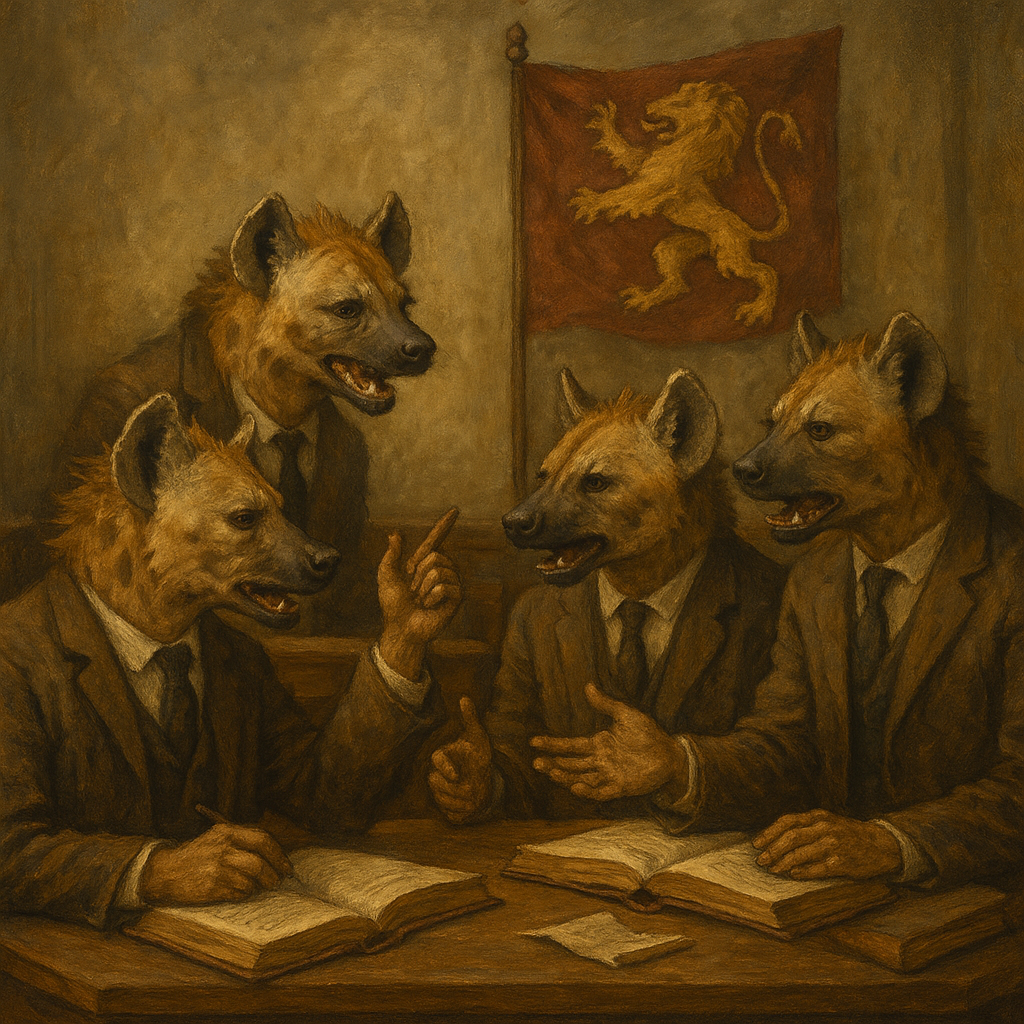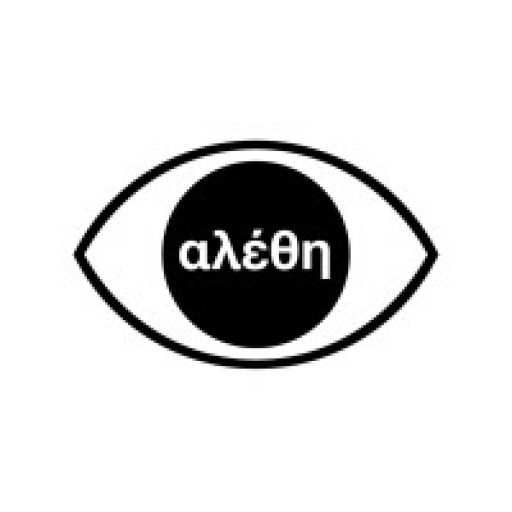In a previous post, I described how a dog’s barking and gaze alternation towards its owner appear to express meaning. The animal seems to ‘tell’ the human what it wants — an unreachable piece of food — and the human, recognising this, may respond. The situation looks like communication.
This scene is a good reduction of what I call the sociocentric perspective: the dog and the human already form a society, a cooperative relationship. From within that relationship, signals appear to function — to convey information or ‘do things to each other’, as most scientists and philosophers would argue. Even when no signals are exchanged, we assume that the human and the dog share a cognitive space in which communication can happen.
Yet from an objective, ethological point of view, the picture looks very different. There are two distinct behaviours at play. The dog’s signalling is effectively descriptive — though dogs have, of course, no linguistic ability to describe. Its signals refer to an object in the world (‘there’s food over there’) and serve a basic need. The human’s signalling, by contrast, is prescriptive: the human issues sounds and gestures aimed at making a dependent animal act. The dog’s barking and the human’s pointing seem reciprocal, but they are not of the same kind. One is object-oriented, the other response-oriented.
The sociocentric illusion causes us to overlook this asymmetry, to think that dogs could have possibly drawn humans into their world, rather than the other way around. We imagine that meaning and language arose from behaviours like the dog’s, when in fact the dog is only mirroring human behaviour. That is, what we call ‘society’ — like dog ownership — already presupposes prescriptive signalling. It is not the cause of it, but its effect.
2. From dogs to hyenas
In The Construction of Social Reality (1995), philosopher John Searle provides an excellent illustration when he compares a pack of hyenas hunting a lion to Congress passing legislation. Both, he argues, are examples of ‘collective intentionality’. The implication is that human institutions are a natural extension of animal cooperation.
Searle, however, glosses over an important aspect of biology: signals. He does not examine animal signalling, as we did in the dog–human example, but focuses instead on mental or even spiritual traits. In his account, creatures like hyenas and apes were already capable of ‘collective intentionality’, and ‘language’ — whatever it is — eventually facilitated the rise of institutions. From this perspective, meaning and communication appear to pre-exist in nature, helping hyenas and apes coordinate their actions much like the dog interacts with the human through barking.
Yet once we turn to behaviour itself, this story collapses. Hyenas pursuing a lion may move together, but they do not communicate in any strict sense. They do not signal to one another about the lion, nor attempt to influence each other’s responses. Their collective movement may appear to express a shared cry of ‘let’s get it!’, yet this is only Searle’s anthropocentric projection. The hyenas are not communicating about the lion; they are simply aiming for it.
Apes do produce signals that resemble communication in the human sense. For example, chimpanzees emit alarm calls that alert others to the presence of snakes, and they sometimes persist when receivers do not respond (Crockford, 2017). This suggests a rudimentary form of referential and intentional signalling similar to the dog’s. However, it remains descriptive rather than prescriptive. As in the dog’s case, the signal refers to something in the environment but does not aim at obtaining a specific response for its own sake. The caller’s goal is to react to danger, not to establish or maintain a signal–response relation.
This distinction matters because, in humans, communication depends precisely on that relation. Humans do not merely signal; we create the conditions for a response. This prescriptive element is absent among apes and other wild animals. Searle’s view — which represents the view of mainstream science and modern philosophy — overlooks this entirely. It assumes that cooperative behaviour among animals already contains the communicative dynamics that make institutions possible.

3. Congress and the symbolic hunt
It is interesting how Searle extends the vision of hyenas, instead of apes, to human institutions. In many East African stories, the hyena is not a true hunter but an imitator — a creature that follows humans, trying to share their speech and join their feasts. Perhaps this is why Searle finds his best model for Congress in a pack of hyenas: beings who coordinate their movements not from shared understanding, but from hunger.
However, when Congress ‘hunts’ a law, its members are not pursuing an object like the lion. The nation itself is not a prey in the world but a prescriptive fiction: it exists only subjectively, and only because people are made to respond to signals. Indeed, the congressmen’s own words are prescriptive — much like a human talking to a dog. These men expect recognition, if not compliance. It is through this mutual aiming at one another that institutions are born.
I first put forward this argument in the paper Children’s Pretence: A Scientific Perspective on Social Reality (2019). In it, I described how a group of hyenas may indeed seem to share an intention to bring down the lion and eat it. They might even hold, for a moment, a common mental representation of that desired state of the world. But they have no capacity to make that representation symbolic or permanent, let alone to treat it as objective. When the lion becomes too hard to catch, the hunt ends — and so does their collective intentionality.
Humans, by contrast, never stop hunting. We keep the lion alive through symbols — such as lions and eagles. Members of Congress, as I wrote there, ‘intend to pass legislation regardless of what may be the case in reality, because this is required by the prescriptive existence of the United States of America.’ Like the hyenas, they act together toward a goal — but their goal is not the lion. It is one another.
4. Description and prescription
Searle is, after all, a philosopher, and philosophy is concerned with values, unlike science. His mistake is therefore rooted in an old conflation of description with prescription — the factual pursuit of prey with the normative maintenance of society. His ‘collective intentionality’ is not a discovery about nature but a story about morality: a way of projecting a societal ideal onto the animal world.
This projection becomes clear in this pseudobiological passage:
When hyenas move in a pack to kill an isolated lion [description], no linguistic or cultural apparatus [prescription] is necessary … The selectional advantage of cooperative behaviour is, I trust, obvious. Inclusive fitness [description] is increased by cooperating with conspecifics [prescription].
— The Construction of Social Reality, p. 38 (corrections added)
Here, description and prescription collapse into one another. What begins as a biological claim — that animals cooperate more readily with their genetic relatives because this enhances inclusive fitness — turns into a moral claim: that cooperation among members of the same species (conspecifics) is inherently good and natural. By importing these biological concepts into his explanation of human society, Searle quietly transforms citizens into kin. He makes it sound as though the members of a nation-state were biologically bound — as if the United States were a species whose members instinctively worked together for mutual reproductive success.
That much, of course, is culturally true. But human society, though composed of conspecifics in the zoological sense, is not made of genetic relatives. It is made of symbolic relatives — individuals bound by shared fictions of ancestry, identity, and ‘natural’ obligation. Language, not lineage, sustains this bond.
References
Crockford, C., Wittig, R. M., & Zuberbühler, K. (2017). Vocalising in chimpanzees is influenced by social-cognitive processes. Science Advances, 3, e1701742. https://doi.org/10.1126/sciadv.1701742
Maanmieli, J., & Maanmieli, K. (2019). Children’s Pretence: A Scientific Perspective on Social Reality. Alethes.net, 2019.
Miklósi, Á., Polgárdi, R., Topál, J., & Csányi, V. (2000). Intentional behaviour in dog–human communication: An experimental analysis of “showing” behaviour in the dog. Animal Cognition, 3, 159–166.
Searle, J. (1995). The Construction of Social Reality. New York: The Free Press.
Soproni, K., Miklósi, Á., Topál, J., & Csányi, V. (2001). Comprehension of human communicative signs in pet dogs (Canis familiaris). Journal of Comparative Psychology, 115(2), 122–126.
Virányi, Z., Gácsi, M., Kubinyi, E., Topál, J., Belényi, B., Ujfalussy, D., & Miklósi, Á. (2008). Comprehension of human pointing gestures in young human-reared wolves (Canis lupus) and dogs (Canis familiaris). Animal Cognition, 11, 373–387.
